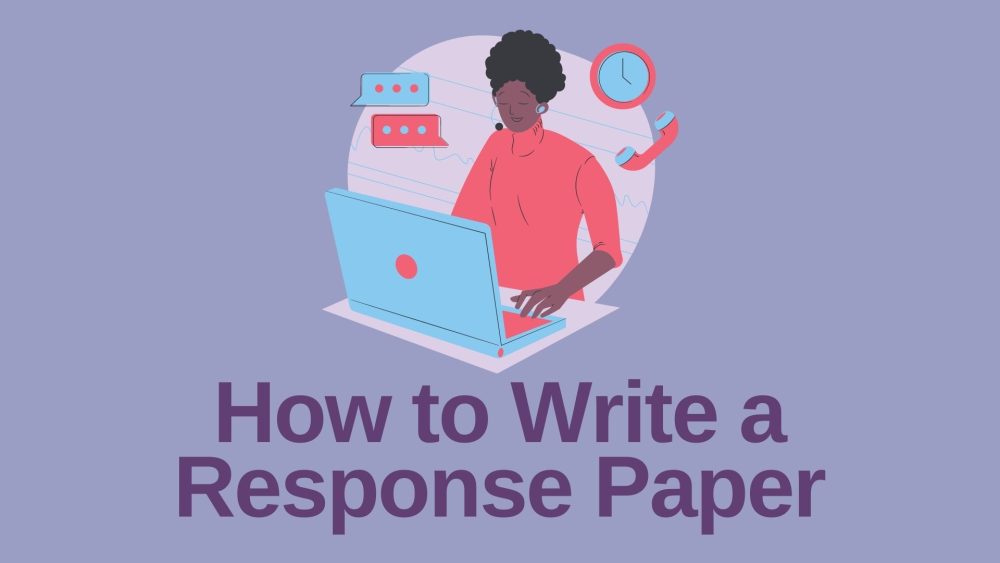Rhetorical analysis assignments are becoming very popular in universities and colleges. In most cases, teachers ask students to analyze the rhetoric of an article, book, artwork, or other works. However, most students get stuck even before starting, which brings about one crucial question, “How do you start a rhetorical paper?”
What is a Rhetorical Paper?
Before we can look at how to begin a rhetorical analysis, it is important to understand what “rhetoric” means. Rhetoric is a form of language that targets stirring emotions and feelings with a targeted audience. Unlike logic that targets to convince the reader about a certain subject using facts, rhetoric uses emotional appeal.
A rhetorical analysis is a form of persuasive writing that captures the fundamentals of a literary piece to determine if the author successfully persuaded the audience/ readers.
How to Start a Rhetorical Analysis: Understand the Rhetorical Analysis Prompt
When working on how to write a rhetorical paper, it is important to appreciate that the process starts well before you sit down to craft the introduction. So, start by looking at the rhetorical analysis prompt, and understand what your teacher wants.
Then, go ahead and evaluate how effectively the author put across his/her points. Pay close attention to the application of rhetorical persuasion techniques, including the following:
- Ethos: This refers to the credibility of the author, and you should seek to answer the question, “Is the author credible?”
- Pathos: Pathos is the emotional side of an argument. When writing a rhetorical analysis, you check whether the author was appealing to the targeted readers. Did the author assist readers in relating with his/her thoughts?
- Logos: Unlike pathos and ethos, logos involve analyzing how the author uses evidence to support his/her core arguments.
How to Start a Rhetorical Analysis Introduction
The introduction of a rhetoric essay has a huge impact on the success of your work. In the introduction, you have the opportunity to not only expose your readers to the subject of the paper but also demonstrate why the work warrants a rhetorical analysis. Here is a demonstration of how to write the introduction like a professional.
- Step One: Start the Introduction with a Captivating Hook Statement
Like other types of essays, the first sentence of your paper should be a captivating hook statement. Make sure that the hook reflects your topic and further corresponds to the audience of the paper. For example, a joke will not be okay as a hook when analyzing an article focusing on a serious health issue such as COVID-19. This type of hook sentence would work perfectly for papers on funny moments, such as comic books or the life of animals in the jungle. Other examples of hooks that you can use are literary quotes, questions, or metaphors. See an example of a hook statement below:
“A woman’s work is never done: many American women grow up with this saying and feel it to be true.”
- Step Two: Bring Out the Background of Your Essay
Once you have provided the reader with a hook statement, you need to move a step further and capture a short background or context. The background should delve deeper into the selected topic to show why it is important and make the reader interested. It also helps to provide a transition from the hook to the thesis of the rhetorical analysis. Remember to keep the background as short as possible, preferably one-two sentences. See the example below:
“One such woman, author Jessica Grosse, wrote “Cleaning: The Final Feminist Frontier,” published in 2013 in the New Republic, and she argues that while the men in our lives recently started taking on more of the childcare and cooking, cleaning still falls unfairly on women.”
- Step Three: Write Your Rhetorical Thesis
In addition to a good hook, your paper also needs a good rhetorical thesis. This is a short argument or standpoint which you want to prove. So, here is a demonstration of how to write a thesis for a rhetorical analysis paper. Suppose your target is analyzing a novel; in such a case, your thesis would be the personal interpretation of the piece. Therefore, craft a thesis to prove your argument to the reader.
To make your thesis more impressive, it is paramount to stay as objective as possible. You might want to check another how to start a rhetorical analysis example to get a clearer picture of how to craft a good thesis. Here is an example of a good thesis:
“Grose begins building her credibility with personal facts and reputable sources, citing convincing facts and statistics, and successfully employing emotional appeals; however, towards the end of the article, her attempts to appeal to readers’ emotions weaken her credibility and ultimately, her argument.
Special Tips to make Your Rhetorical Paper Introduction Excellent
- Start by carefully reading the prompt for the assignment and understanding your teacher’s requirements.
- Read another rhetorical paper sample, especially one that was done by an expert, to see how different aspects of the introduction are created.
- Make sure to also check other rhetorical analysis thesis examples. Then, work on crafting a better thesis for your rhetorical paper.
- Look at the rhetorical paper introduction as part of the entire paper and not in isolation. For example, does the thesis of the paper manifest itself throughout the write-up?
- Work on your rhetorical analysis early. Waiting until the last minute is likely to make you miss important points.
- Note that writing a great introduction to rhetorical analysis is only the first step. You also need to learn how to write a rhetorical paper to make the entire paper good. So, ensure to pick the best points and write them professionally.
- Read through the introduction severally to ensure it is free from grammatical errors and flows well with the rest of the paper.
Get Help With Rhetorical Analysis Today!
If you want to make your rhetorical analysis outstanding and get a good grade, it must be carefully done, from the introduction to the end. In this post, we have demonstrated how to set up a rhetorical introduction like a pro. Although you can work on the introduction at the beginning of the paper, which is okay, it would be better to ask professional writers to do it for you.









